MAC and Physical Layer Enhancements
| ✅ Paper Type: Free Essay | ✅ Subject: Engineering |
| ✅ Wordcount: 736 words | ✅ Published: 31 Aug 2017 |
Abstract
Communication technologies have improved a lot since the time we started using radio waves for communicating. We have seen advancement not just in the Cellular side but also on the WiFi side. The availability of limited spectrum has been the issue of the 21st century. As we have improved our technologies from the First generation which was based on analog communication to Fourth Generation which is based on Orthogonal Frequency-division multiplexing (OFDM), the free space in the spectrum has also reduced which has created the problems of congestion. We have come to the point where there is a demand for high capacity, better throughput, constant connectivity and high spectral efficiency. To cater this demand, we not only need high-end devices but equally efficient core network. This paper would focus on the converging technology enhancements at Physical and MAC (Media Access Control) layer of the Fifth generation (5G) on the cellular side and 802.11ad on WiFi side.
I. Introduction
With the increasing number of users, there is a spectral crunch in both the licensed and unlicensed spectrum. Licensed spectrum is the frequency chunk which is bought by the telecom companies, and a company can use its specific frequency band. The technologies in the licensed spectrum are GSM (Global System for Mobile Communication), CDMA (Code Division Multiple Access), LTE (Long Term Evolution). Unlicensed spectrum is the frequency chunk which is free and can be used by anyone. The technologies used in unlicensed spectrum are Bluetooth, WiFi. The increasing number of users have created the need for finding new spectrums and simultaneously new technologies which can be used to improve the efficacy of both cellular and WiFi communication. New standards i.e. 5G for cellular communication and 802.11ad for WiFi are going to use high-frequency bands which were never used before. This untapped potential is going to be a game changer. It will not just improve the spectral efficiency and the throughput but will also increase the capacity. Technologies such as 802.11ac and LTE-Advanced (Long term evolution-advanced) could provide data rates as high as 1 Gigabytes per second (Gbps) [5] [6]. Also, LTE-A used 2620-2690 MHz (Mega Hertz), and 802.11ac used 5GHz (Giga Hertz) band for data transfer [1] [5].
802.11ac and LTE-A employed technologies such as MIMO (multiple input, multiple output), beamforming which helped in achieving necessary throughput and capacity requirements, but now even these enhancements need necessary upgradation and changes to support the ever-increasing demand. Not only this but the cost of the wired backhaul is also a big concern. All these needs must be met in 5G and 802.11ad. The cost of wired backhaul can be reduced by moving towards mm-wave (Millimeter wave) which will not just decrease the cost of backhaul but will also improve the overall throughput [1]. This can be a converging point for the two technologies. 5G will be using frequency band i.e. 28 and 38 GHz, and 802.11ad will be using the 60GHz band which falls in mm-wave frequency band [1] [2]. Directional beamforming will be another addition to both 5G and 802.11ad wherein we will direct the signal towards the intended receiver that will help in reducing the power required [1] [2].
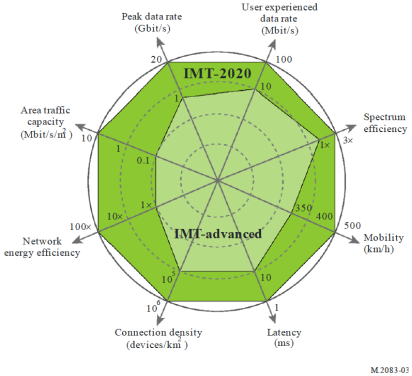
Figure 1. Improvement in performance from 4G to 5G. [8]
Figure 1 gives a clarity about the targets which were set after using International Mobile
Telecommunications-Advanced (IMT-Advanced Standard) i.e. 4G to enhance its performance in
case of International Mobile Telecommunications-2020 (IMT-2020 Standard) i.e. the 5G
standard [8].
II. Physical Layer Enhancements
Here are some of the enhancements at the Physical layer of 802.11ad and 5G:
1. Millimeter Wave:
(i) Millimeter wave in 802.11ad: Propagation of signal in the 60GHz unlicensed spectrum is different from that of 5GHz and 2.4GHz which were used in previous WiFi protocols. The frequency range in which the 60GHz falls is the Millimeter wave frequency band. Millimeter wave band will allow faster data transfer and will help us in using wireless docking stations. This will reduce the cost of backhaul as we will be removing the wires. The issues with 60GHz spectrum are its smaller range due to high attenuation, as the wavelength is small thus it causes blockage due to concrete walls [2].
We can also see from the figure 2. that the effect of oxygen in the atmosphere at 60GHz is high and causes atmospheric absorption of the millimeter wave. These are some of the limitations of 60 GHz band which are being looked at like the issue of absorption by oxygen can be reduced by using band <60GHz [1] [2].
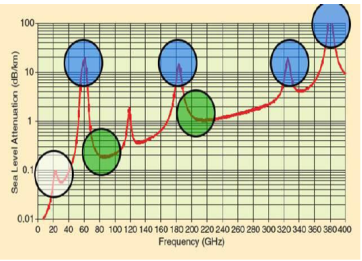
Figure 2. High Atmospheric absorption at 60GHz. [1]
(ii) Millimeter wave in 5G: The proposed band for 5G is 28GHz and 38GHz which falls in the region of millimeter wave. This is going to help in increase the data rate. The proposed data rate is nearly 20Gbps which is nearly 20 times that of 4G [8]. Millimeter waves can travel smaller distances as the wavelength is small which causes high attenuation due to atmospheric absorption. This can be mitigated by using the concept of small cells in our network. Cell size can be up to 200 meters.
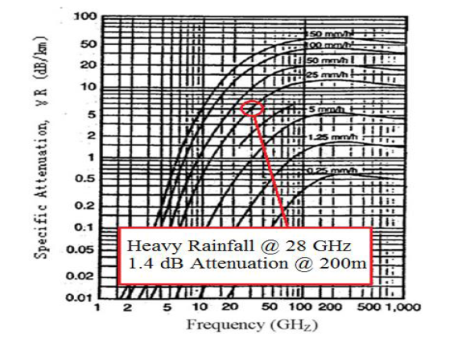
Figure 3. Attenuation Due to Heavy Rainfall. [1]
Figure 3 shows the attenuation due to heavy rainfall of 25 millimeter/hour for a 28GHz band for 1 Kilometer cell size i.e. 7db which will be only 1.4db for a cell size of 200 meter [1].
2. Beamforming:
(i) Directional Beamforming in 802.11ad: In directional beamforming, the signals are directed to the intended receiver. It has been introduced instead of using an omnidirectional antenna which used to send the beam in all the directions reducing the power of the signal. But it is highly impractical to use highly-directional transmissions as there is a high chance of attenuation due to blockages. This can be prevented by using automatic gain control. MAC mechanisms are also affected due to the Highly directional communications such that the devices are not able to know that there is some other communication going on which increases the chances of collision. Golay sequences are used to reduce these chances of collisions. Golay sequences are the complementary sequences and help in synchronization and automatic gain control that in turn helps in attaining a throughput of 27.5Mbps thus making Management frames more efficient. Sum of out-of-phase Autocorrelation coefficients for Golay sequences being zero reduces the level of side lobes which in turn helps in reducing the chance of collision [2].
(ii) Adaptive beamforming in 5G: Beamforming is a concept in which we change the specific weights at the antenna level such that we direct the signal to a specific area by concentrating the power in the main lobe and reducing the power of signals in the side lobe. This will increase the throughput and hence will improve the user experience. In adaptive beamforming, the channel is used in an efficient manner which also helps in reducing the issue of interference. This can be achieved by using the concept of scheduling in different base stations. This can be used in a very interesting manner in 5G, and it will also help by improving the coordination between various eNodeBs. Hence the concept of adaptive beamforming will make the 5G network faster and more efficient [9].
3. MIMO:
(i) Multiuser-MIMO (MU-MIMO) in 802.11ad: At physical layer level 802.11ad works in two modes i.e. OFDM and Single carrier mode. MIMO is used for diversity in communication. In multiuser MIMO for 802.11ad, we use a matrix of a minimum of 2X2 (2 receiver antennas and 2 transmitter antennas). We can send signals to 2 or more users at one time with a very high throughput because we are employing OFDM. Previously we were employing only single user-MIMO wherein we used to send multiple signals to only one user. No doubt it gave high speed, but we were not able to use the limited unlicensed spectrum efficiently. Thus, with the advent of Multiuser-MIMO, the problem of low efficiency has been reduced [2] [10].

Figure 4. Block diagram of Transmitter in MIMO [10].
From figure 4 we can see how the data is sent using MIMO technique. Here firstly data is sent to the scrambler. After scrambling the data, it is encoded by the LDPC (low-density parity-check) encoder for tone interleaving. After interleaving the OFDM processed data we apply Inverse Fast Fourier Transform (IFFT) on the data. Finally, we add a guard interval to protect the sent data [10].
(ii) Massive MIMO in 5G: 5G will be using massive MIMO technique that will involve a large number of antennas and the number will more than 10 times larger than previous networks. This will not just give a high amount of beamforming gains but will also increase the capacity of the network. But there is a catch here. The increase in a number of streams will increase the overhead of pilot signals, and because of this, we will use some part of our spectrum. Also, there is an increase in the complexity if we use a high number of antennas. The solution to this overhead is that we can use Non-Linear Estimators and small cells which will help in reducing the effect as at high signal-to-interference-plus-noise ratio (SINR) the effect of errors in the signal is very less [4].
III. MAC Layer enhancements
Here are some of the enhancements at the MAC layer of 802.11ad and 5G:
1. Beamforming Training in 802.11ad:
Beamforming training is a part of directional beamforming in which we select a pair of receiver and transmitter sectors so that the network can be optimized and we can get the best coverage.
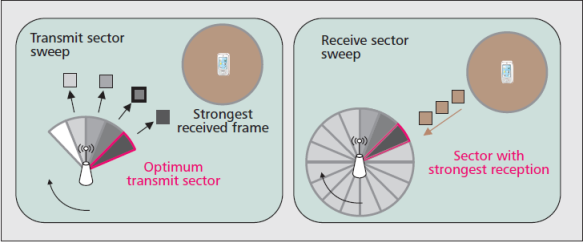
Figure 5. Sector training in Transmitter and Receiver antenna [2].
Figure 5 shows the sector training process. This is done is three phases. In the first step, we try to find the best transmitting antenna. In the second step, the training of only those transmitting and receiving antennas happens for which the transponder thinks are the best for the network. In the third step, various weights for the antennas are adjusted according to the changes in the channel so as to get the maximum level of Signal to Noise Ratio which will thus be able to get the best coverage for the network. Hence the process of Beamforming training for 802.11ad is completed [2] [3] [7].
2. Contention-Based Medium Access in 802.11ad:
In IEEE 802.11 standards, enhanced distributed channel access (EDCA) is used for contention-based Medium access. But there is an issue of deafness that arises when we use the contention based medium access and directional beamforming together. This can be reduced by using Beamforming training wherein we select the best transmitter and receiver antenna for the communication. Chances of collisions are increased due to deafness because carrier sensing ability is reduced. Multiple Network allocation vector (NAV) timers are used at the MAC level. Here the channel is allocated only if the NAV is zero and will not be allocated in case the NAV is non-zero. The concept of NAV for the contention window in 802.11 standards has been used previously as well. Using this concept will enhance the capacity and efficiency of 802.11ad and will be different from previous standards as it uses direction beamforming [2].
3. Dynamic Channel Time Allocation in 802.11ad:
Dynamic channel time allocation is a polling based allocation of resources in 802.11ad at the MAC layer. The polling is done not just for one frame but for a specific time chunk of the channel. The issue of deafness is avoided due to personal basic service set (PBSS) control point/access point (PCP/AP) that reduces the chance of a collision as PCP/AP knows the path of transmitting antenna. The process of Dynamic Channel time allocation is explained in Figure 6. It shows the Beacon header interval (BHI) can be used in dynamic scheduling. Firstly, a channel is gained by the PCP/AP for the polling frames that are sent to their respective stations. Service period requests (SPRs) are used to reserve a specific channel time for their respective communication. Communication can be between Station (STA)- STA or STA – Access Point (AP). Channel protection points act as the guard time between two allocated channel times adding reliability in communication [2].
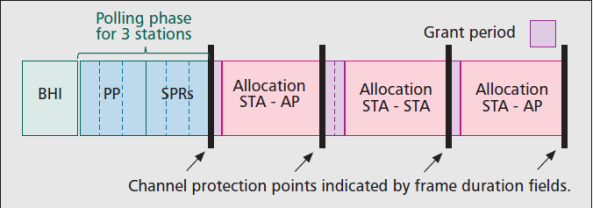
Figure 6. Dynamic Channel Time Allocation [2].
4. Full-Duplex MAC Protocol in 5G:
At Physical layer level, Full-Duplex must reduce the use spectrum making the communication efficient. At MAC layer level the protocol must be defined such that it optimizes the network and reduces the chances of collision. The problem of a hidden node due to highly directional communication can also arise just like it used to happen in the case of WiFi standards. We can use the concept of Request to Send / Clear to Send (RTS/CTS) which was used in WiFi standards being a half-duplex communication. For 5G we will be using full-duplex clear-to-send (FCTS) instead of just the CTS which was used in WiFi i.e. a unidirectional communication. Figure 7 shows the channel allocation for communication between Node A and Node B. Firstly RTS is sent from Node A to check if there is the availability of the channel. After that there is a Short Interframe Space (SIFS) for which we need to wait for FCTS from Node B. Now being a bidirectional communication (Full-duplex) an FCTS is sent by Node A as well which makes it different from WiFi standards. After another SIFS interval, the channel is allocated, and there is a bi-directional communication between Node A and Node B. After the channel time allocated is complete, there is a small SIFS before ACK (Acknowledgement) which is kept and this ACK shows that the channel has been released [11].

Figure 7. Channel Allocation in Full Duplex 5G between Node A and Node B [11].
5. Device-to-device communications in 5G:
It is currently a part of LTE-A Release 12 of the 3gpp standards. Device to device (D2D) communication will be an inter-communication between the devices that will use 5G. There is no need to route the data from the 5G base station in D2D communication. The devices will use the same spectral resources as the 5G network. Thus, we must optimize the network to meet the requirement of the users. This will improve the spectral efficiency of the network and will increase the capacity as well. For D2D communication the devices should be in proximity. This can be very useful in case of Autonomous vehicles such as driverless cars which can communicate with each other and thus protect the passengers. D2D communication can occur in two ways. The first way is that one of the UE (User) can send a broadcast signal about its availability and what it can offer. The discoverer UE if interested in the characteristics of the broadcasting UE establishes a connection. The second way is that one of the UE will broadcast its requirements and the UE which meets these criteria can establish a connection with this UE [12].
IV. Conclusion
This paper has shed light on the most recent enhancements taking place in 802.11ad and 5G. The paper has addressed the issue of spectral crunch and how these two technologies will cope up with this issue in the near future. The enhancements introduced in the paper have opened the way for the two technologies to interoperate such that the user can get 5G connectivity when outside and 802.11ad connectivity when inside their homes. Convergence of these two technologies will be made easy not just at the Physical level but at the MAC level too. At physical layer level, we have seen the use of mm-wave and directional beamforming, and at MAC layer level, we have seen full-duplex communication using RTS/CTS in 5G which will increase convergence. Hence, the convergence of these two technologies will increase the capacity as a lot of unused spectrum will be released.
V. References
[1] T. Rappaport, S. Sun, R. Mayzus, and H. Zhao, “Millimeter Wave Mobile Communications for 5G Cellular: It Will Work!” IEEE Access, pp. 335-349, 2013.
[2] T. Nitsche et al., “IEEE 802.11ad: Directional 60 GHz Communication for Multi-Gigabit-per-Second Wi-Fi,” IEEE Commun. Mag., vol. 52, no. 12, Dec. 2014, pp. 132-41.
[3] H. Shokri-Ghadikolaei, C. Fischione, P. Popovski, and M. Zorzi, “Design aspects of short-range millimeter-wave networks: A MAC layer perspective,” IEEE Netw., vol. 30, no. 3, pp. 88-96, May 2016.
[4] V. Jungnickel, K. Manolakis, W. Zirwas, B. Panzner, V. Braun, M. Lossow, M. Sternad, R. Apelfrojd and T. Svensson, “The Role of Small Cells, Coordinated Multipoint, and Massive MIMO in 5G,” IEEE Commun. Mag., pp.44-51, May 2014.
[5] R. Van Nee, “Breaking the Gigabit-per-second barrier with S02.11AC,” IEEE Wireless Communications, vol. IS, pp. 4-4, April 2011.
[6] S. Parkvall, et al., “LTE-Advanced – Evolving LTE Towards IMT-Advanced”, in IEEE Proc. Vehicular Technology Conference, Sept. 2008.
[7] E. Perahia and M. X. Gong. Gigabit wireless lans: an overview of IEEE 802.11 ac and 802.11ad. ACM SIGMOBILE Mobile Computing and Communications Review, 15(3):23-33, 2011.
[8] “M.2083, Recommendation ITU-R, IMT Vision – Framework and overall objectives of the future development of IMT for 2020 and beyond,” September 2015.
[9] S. Chen, S. Sun, Q. Gao and X. Su, “Adaptive Beamforming in TDD-Based Mobile Communication Systems: State of the Art and 5G Research Directions,” in IEEE Wireless Communications, vol. 23, no. 6, pp. 81-87, December 2016.
[10] X. Zhu, A. Doufexi, and T. Kocak, “Throughput and coverage performance for IEEE 802.11ad millimeter-wave WPANs,” in Vehicular Technology Conference (VTC Spring), 2011 IEEE 73rd, 2011, pp. 1-5.
[11] X. Zhang, W. Cheng, and H. Zhang, “Full-duplex transmission in PHY and MAC layers for 5g mobile wireless networks,” Wireless Communications, IEEE, vol. 22, no. 5, pp. 112-121, 2015.
[12] Z. Ma, Z. Zhang, Z. Ding, P. Fan, and H. Li, ”Key techniques for 5G wireless communications: network architecture, physical layer, and MAC layer perspectives,” Sci. China Inf. Sci., vol. 58, no. 4, pp. 1-20, 2015.
Cite This Work
To export a reference to this article please select a referencing stye below:
Related Services
View allDMCA / Removal Request
If you are the original writer of this essay and no longer wish to have your work published on UKEssays.com then please click the following link to email our support team:
Request essay removal


